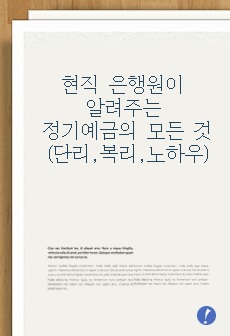The cultural changes after the Great Depression
*진*
다운로드
장바구니
목차
없음본문내용
After the First World War, the United States has experienced a boom in the United States while the proportion increased significantly on the world economy in 1920s. Prevalence of mechanization and electricity, and Ford’s factorized system for a standardized product supported the rapid growth of economic prosperity of United States. Especially, the construction and automobile industries have been the leaders in this advancement. That is, the business associated with vehicle production: the petroleum, steel, and rubber consumption has grown quickly. Plus, due to automobile road network has also been enhanced, the living quarter broadens even larger and thus the building construction has been awash in affluence.Changes in life style also trigger variations in the life values of Americans. They have begun to disregard asceticism and Puritanism of Victorian morals, and wanted to fully enjoy the wealth that the development of capitalism has brought. Women have won the right to vote, and refused to accept the traditional morality and social norms
참고 자료
Primary SourceCrowd of depositors gather in the rain outside Bank of United States after its
failure Photograph. 1931. From Library of Congress: New York World-Telegram and the Sun Newspaper Photograph Collection. http://loc.gov/pictures/resource/cph.3c17261/ (accessed October 5, 2014)
Wall St. Lays An Egg. Illustration. New York: Variety. Oct. 30, 1929. From Library of
Congress Prints and Photographs Online Catalog. http://www.loc.gov/pictures/item/2003653824/ (accessed October 5, 2014).
Walt Disney, seated, examines film with Mickey Mouse perched on his right arm.
Photograph. 1935. From Library of Congress : New York World-Telegram and the Sun
Newspaper Photograph Collection. http://www.loc.gov/pictures/item/95512208/ (Accessed November 27, 2014)
Secondary Source
Barnard, Rita. “The Great Depressions and the Culture of Abundance: Kenneth Fearing
Nathanael West, and Mass culture in the 1930s”. Cambridge: Cambridge University Press, 1995
Calomiris, Charles W, and Joseph R. Mason. “Consequences of Bank Distress during
The Great Depression” The American Economic Review 93, No. 3 (2003): 937-947.
Dickstein, Morris. “Dancing in the Dark: A Cultural History of the Great Depression”, New York:
W.W. Norton&Company, 2009.
Johnson, Jeffrey. “Super-History:Comic Book Superheroes and American Soceity, 1938
to the Present”. Jefferson: McFarland, 2012.
Robb, Brian, “A Brief History of Walt Disney”. London: Little, Brown Book Group,
2014.
McElvaine, Robert S. “The Great Depression: America, 1929-1941”. New York: Three
Rivers Press, 1993.
Nel, Philip. “The fall and Rise of Children’s Literature”. The University of Chicago Press (2008):
23-27
Rothbard, Murray. America’s Great Depression. Auburn: The Ludwig von Mises
Institute, 2000.
Seguin, Robert. “Structures of the Jazz Age: Mass Culture, Progressive Education, and
Racial Discourse in American Modernism (Review),” MFS Modern Fiction Studies 42 (2000) 561-562.
Kennedy, David. “The American People in the Great Depression: Freedom from Fear,
Part One. Oxford: Oxford University Press, 2003.
Welky, David. “Everythign Was Better in America: Print Culture in the Great
Depression”. Champaign: University of Illinois Press, 2008.



















